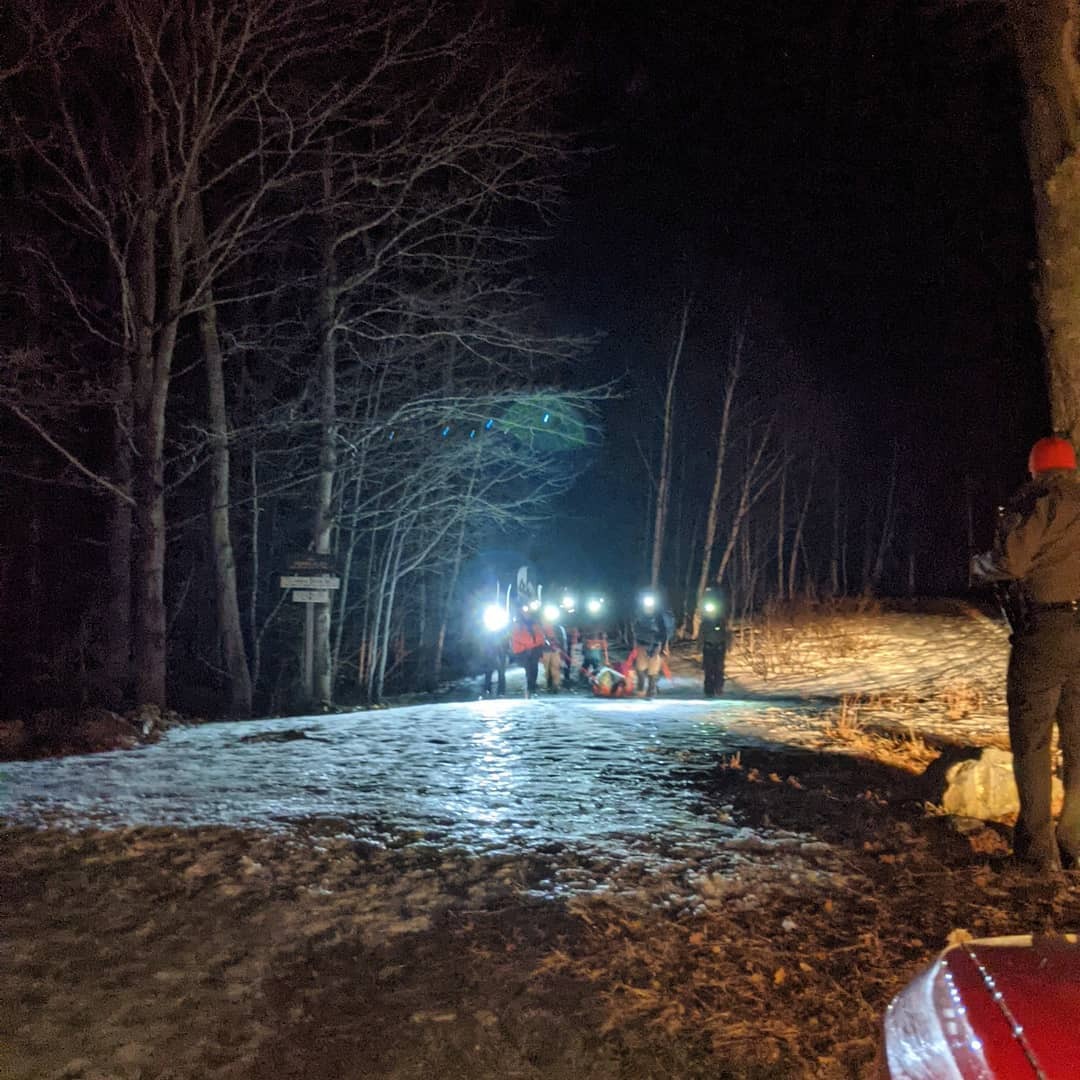The current snowpack at mid and upper elevations in the Presidential Range presents widespread hazards of long sliding falls. These hazards are a result of warm weather and rain followed by a refreeze.
Looking at the MWOBS F6 for March reveals nearly a week (03/21 to 03/26) of average daily temperatures that were 15-20F above average. On March 31, the summit stayed above the freezing mark overnight before temperature dropped rapidly on Thursday, April 1. Rain was observed at the summit for 12 hours before turning to freezing rain, sleet, and then snow. Summit temperature dropped below zero Thursday night and remained in the single digits above zero on Friday. The Hermit Lake snow plot, just below Tuckerman Ravine, reached a high of 18F. Accordingly, Friday’s forecast warned of long sliding fall hazards: “the risks associated with taking a long sliding fall are the greatest concern, by far, for safe travel in steep terrain today.”
04/02/21 Events:
On Friday, a group of skiers climbed into South Gully in Huntington Ravine. They assessed conditions as they ascended, finding a variable mix of edgeable snow and ice patches. When the snow became too firm for easy booting in crampons, they stopped climbing and transitioned to skis. The first skier made a few turns before losing an edge, resulting in a tumbling slide over a buttress. He collided with a tree below with enough speed to cause a femur fracture. His party and nearby skiers and climbers responded quickly and prepared for a litter evacuation. Snow rangers arrived on scene with the litter, which was belayed down to low angle terrain and transported by snowmobile to an ambulance.
04/03/21 Events:
Saturday brought clear skies and sunshine. This resulted in some softening of surface snow, but the long sliding fall hazard persisted beneath. Early in the afternoon, a skier lost control near the Lip in Tuckerman Ravine and took a long sliding fall down to the ravine floor. He sustained injuries to the knee and shoulder. A suspected shoulder dislocation was unable to be reduced in the field. He was unable to walk due to the knee injury, necessitating a litter evacuation down the Tuckerman Ravine Trail. Mount Washington Volunteer Ski Patrollers, the Hermit Lake Caretaker, bystanders, and a belay rope were all necessary to transport him down to Hermit Lake safely. A snowmobile then transported the skier to the parking lot.
Shortly thereafter, a second skier was injured in a long sliding fall in Tuckerman Ravine. A bystander assisted in treating the resulting shoulder injury and the skier was able to hike out after being loaned a pair of crampons.
Later that afternoon, a skier was seen falling the entire length of Main Gully in Gulf of Slides, around 800 vertical feet. The skier was reported to be sliding very fast, and tumbled airborne multiple times on the way down. The severity of initial reports necessitated immediate response. Two MWAC snow rangers began traveling to Gulf of Slides from Hermit Lake while other MWAC staff contacted Dartmouth-Hitchcock Advanced Response Team to request helicopter assistance. Unfortunately, when the DHART helicopter arrived to assess the area, all landing zone options were deemed unsuitable. Snow rangers made contact with the skier, who was being transported down the trail in a litter, and assessed his injuries. Finding the skier stable, the decision was made to continue with the litter transport. About 15 people assisted with this process, including nearby skiers, snow rangers, and NH Fish and Game officers. The rescue party reached the parking lot well after dark and the skier was cared for and transported to the hospital by Gorham EMS.
Remember that there can be a fine line between being in control and being totally at the mercy of the mountains. As such, be prepared for the conditions and consequences of the day. Start by tracking weather and snow conditions. Bring your beacon, shovel, and probe when traveling in avalanche terrain. Equip yourself with crampons and an ice axe to navigate steep slopes. Know how to use your equipment and practice regularly. Assess risks and consequences constantly. Temporal and spatial variability can provide avenues to improve your safety margins, but could also result in the opposite – whether you recognize it or not. Stay alert as you travel so you can recognize no-fall zones and choose terrain carefully. Know your abilities and limits. In case things still go wrong, be prepared to stay warm and self evacuate.
Thanks to all responding parties, AMC Caretakers, MWVSP, NH Fish and Game, Gorham EMS and DHART. Events such as these often require a community effort. We are fortunate to be surrounded by a community that is always willing to help.



